In Chargebee we use customers to hold all the details of a subscriber. The customer acts as the main object to store and manage the subscribers' billing & contact information, card details, and payment mode.
Customers can be created in three ways:
When a New Subscription is Created
When a new subscription is created either through the hosted page, Chargebee user interface or through the API, Chargebee automatically creates a new customer as well.
Through Chargebee Site
You can create a new customer under Customers > Create Customer.
Using API
You can use the Create a customer API to create a new customer.
Once a customer is created, it contains basic attributes including customer id, name, email, company name and phone number. These attributes are common to the customer object.
The additional entities linked to the customer object are:
Except subscriptions, all the other entities are common to the customer object.
You can access your customer details from the Customers tab.
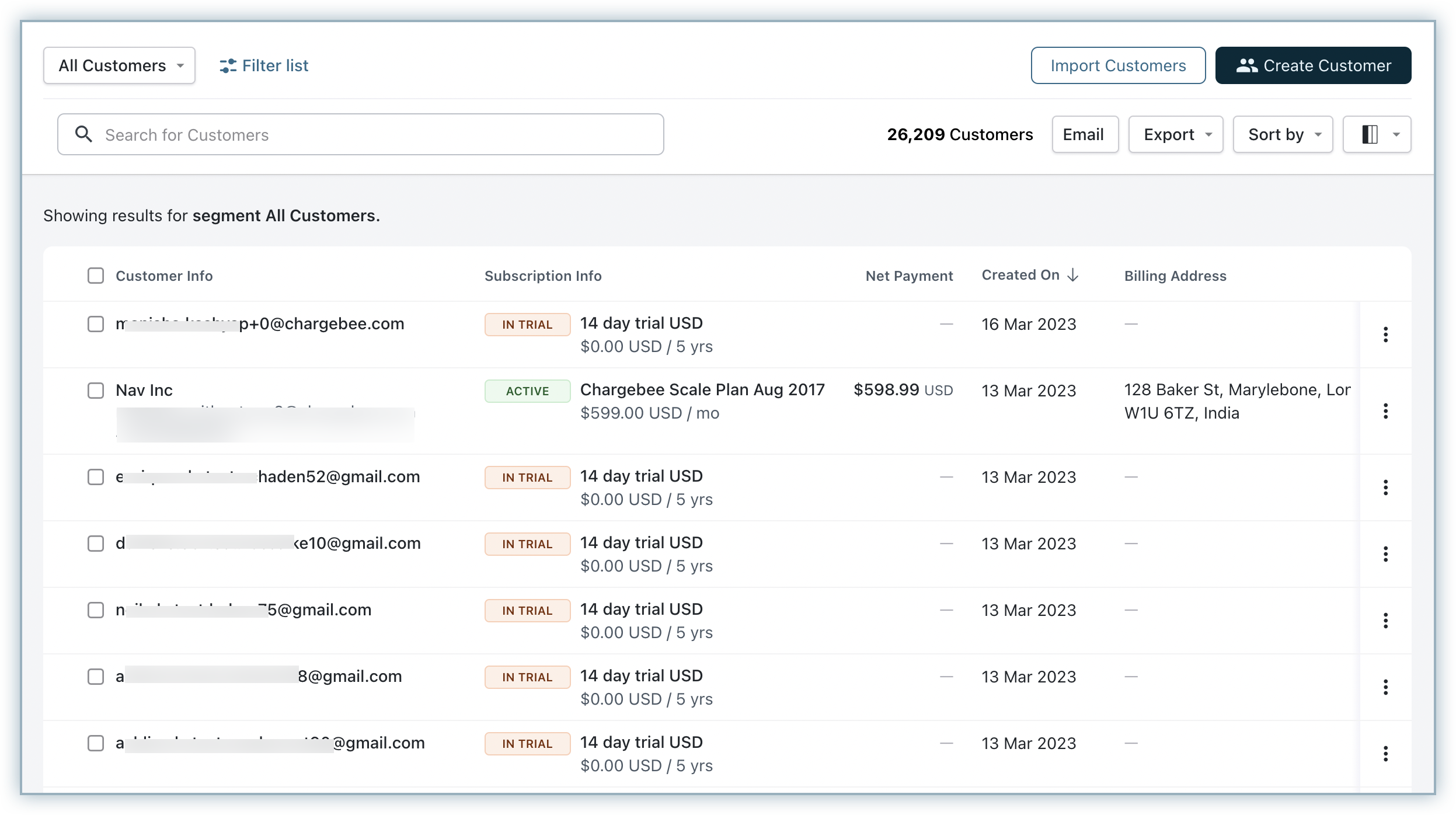
Clicking on the Name of a customer will open the Customer details page which contains all the information pertaining to the customer such as subscription, billing info, payment methods etc.
The Hero card displays the most relevant information with which you can quickly find the customer information you need without the clutter, enhancing your workflow and saving time.
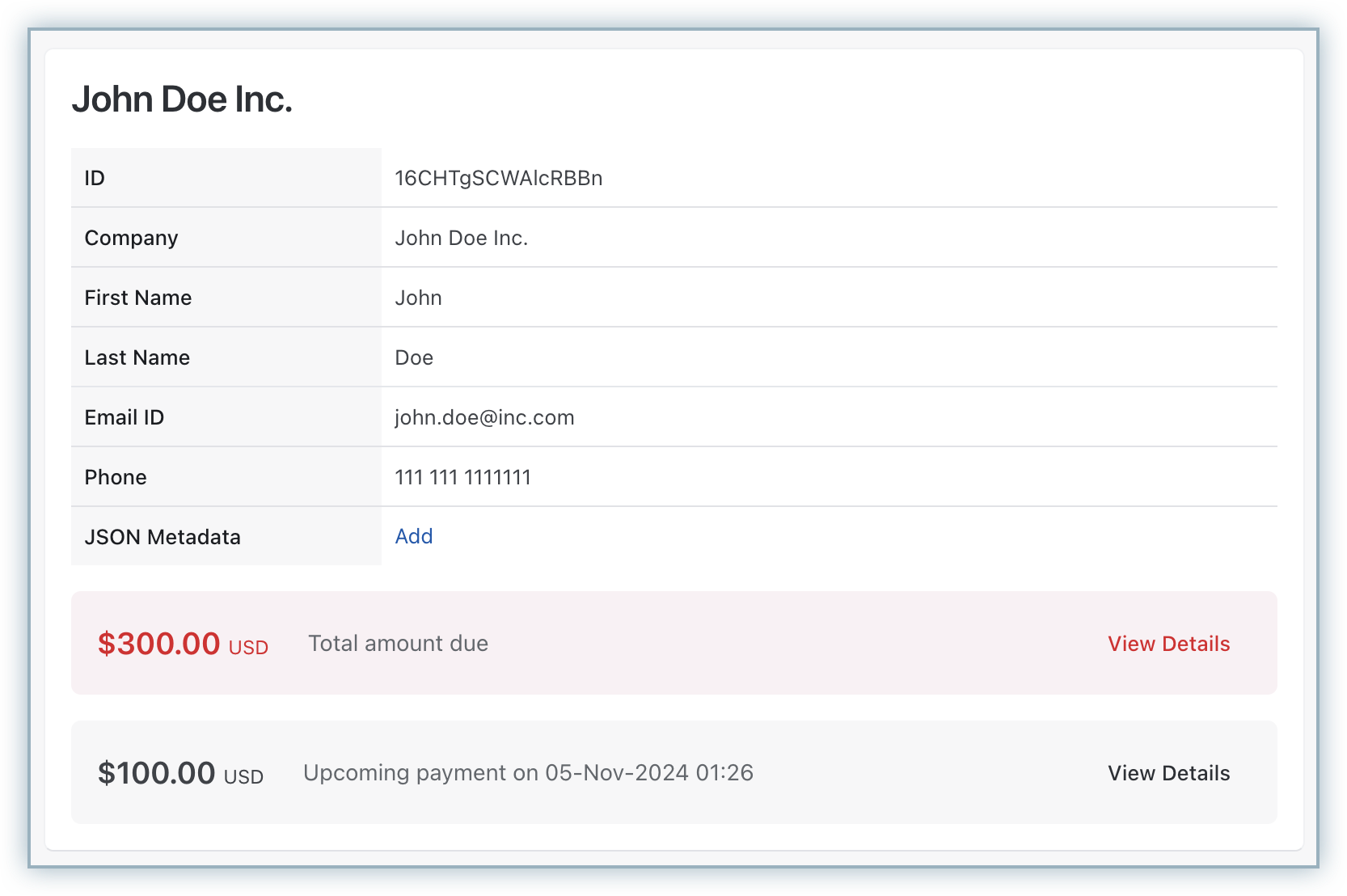
You can also perform other operations such as Send Email, Export, etc. from within the index page shown above.
The Net Payment column on the customer's index page gets populated only for Active subscriptions having currency the same as the base currency of your site.
You can choose to exempt a customer from paying taxes by selecting the This customer is tax exempt checkbox.
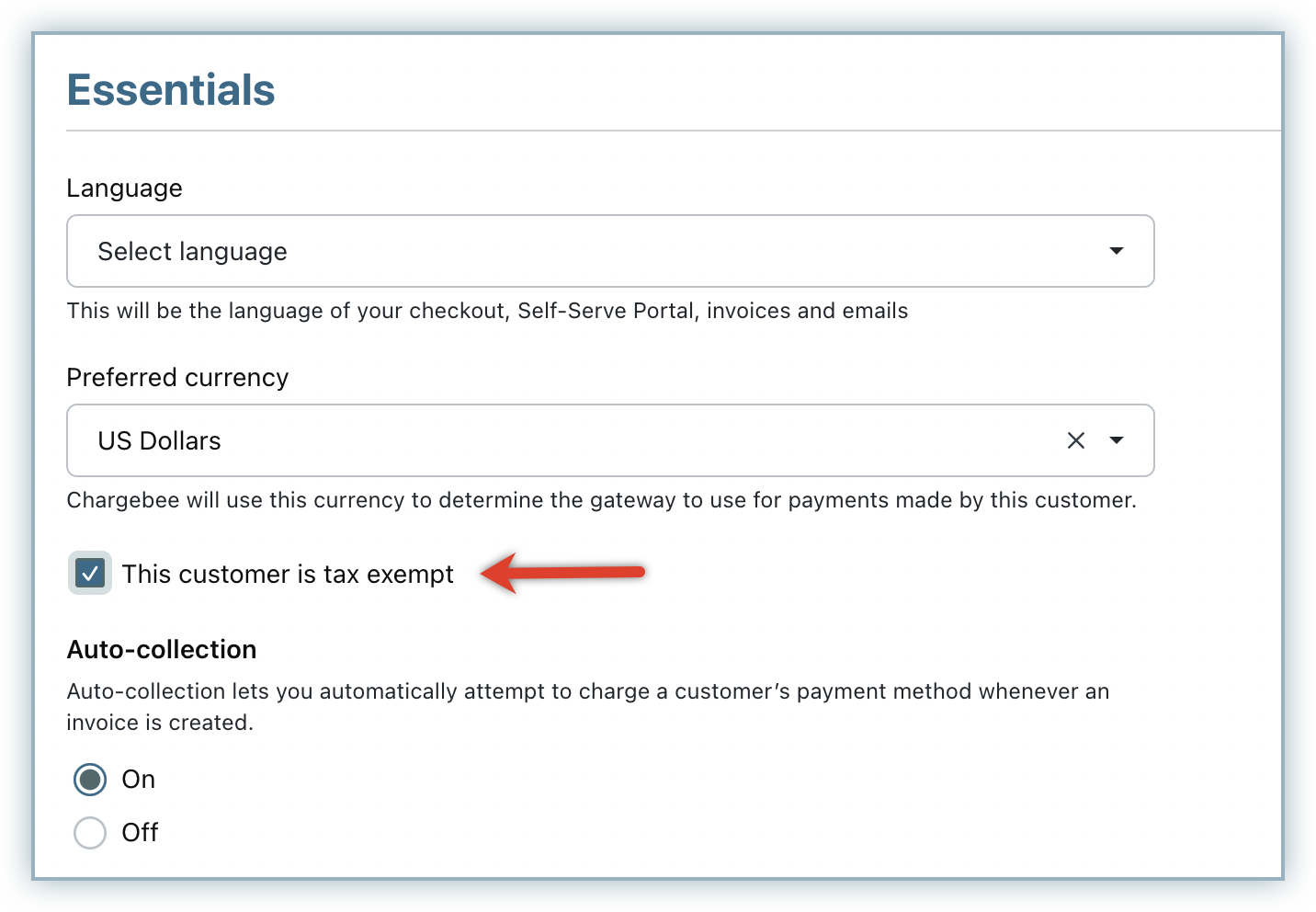
When metered billing is enabled in your Chargebee site, and you have configured to auto-close pending invoices and allowed overriding via Chargebee interface, you can select Do not auto-close invoices.
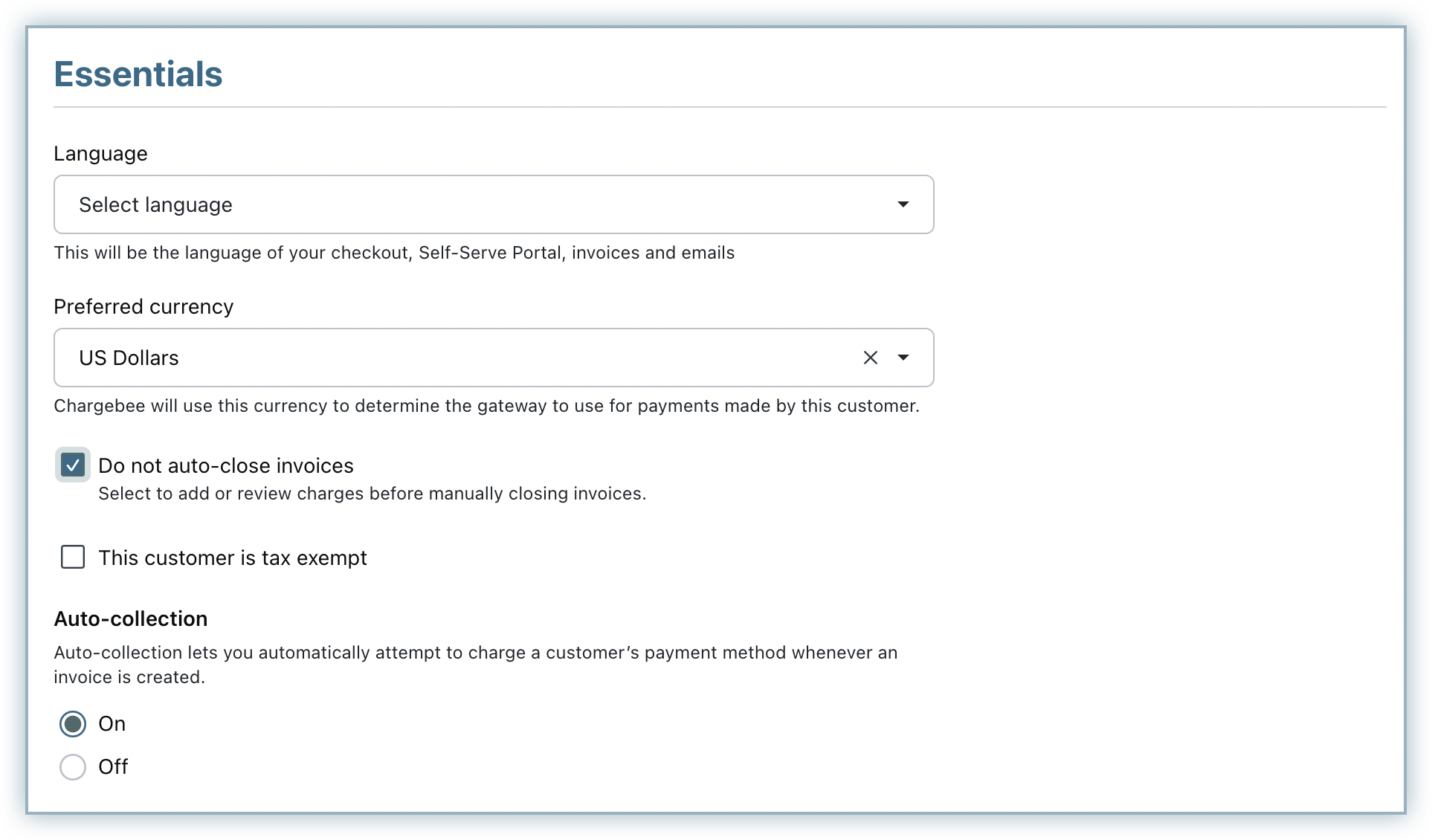
You can add/review usage, manually close the invoices and send them to customers.
Similarly, when Consolidated Invoicing is enabled in your Chargebee site, you can override the global setting for this customer record using the drop-down.
Chargebee's pricing flexibility is evolving to meet the diverse needs of merchants worldwide. Previously, Chargebee allowed the price type configuration at the site level for each currency. However, we're introducing enhanced flexibility in price type configuration for subscriptions. Whether you're selling to B2B and B2C customers with varying tax preferences or transitioning between tax-inclusive and tax-exclusive pricing models, Chargebee now offers the flexibility you need to optimize your subscription pricing.
Setting Up Price Type Configurations via the Chargebee App
To set up price type configuration in Chargebee, you can now utilize the newly introduced Price Type field within the customer details page. This field allows you to specify the price type for individual customers based on their pricing preferences. When populating the field, you should ensure that the values are entered exactly as follows:
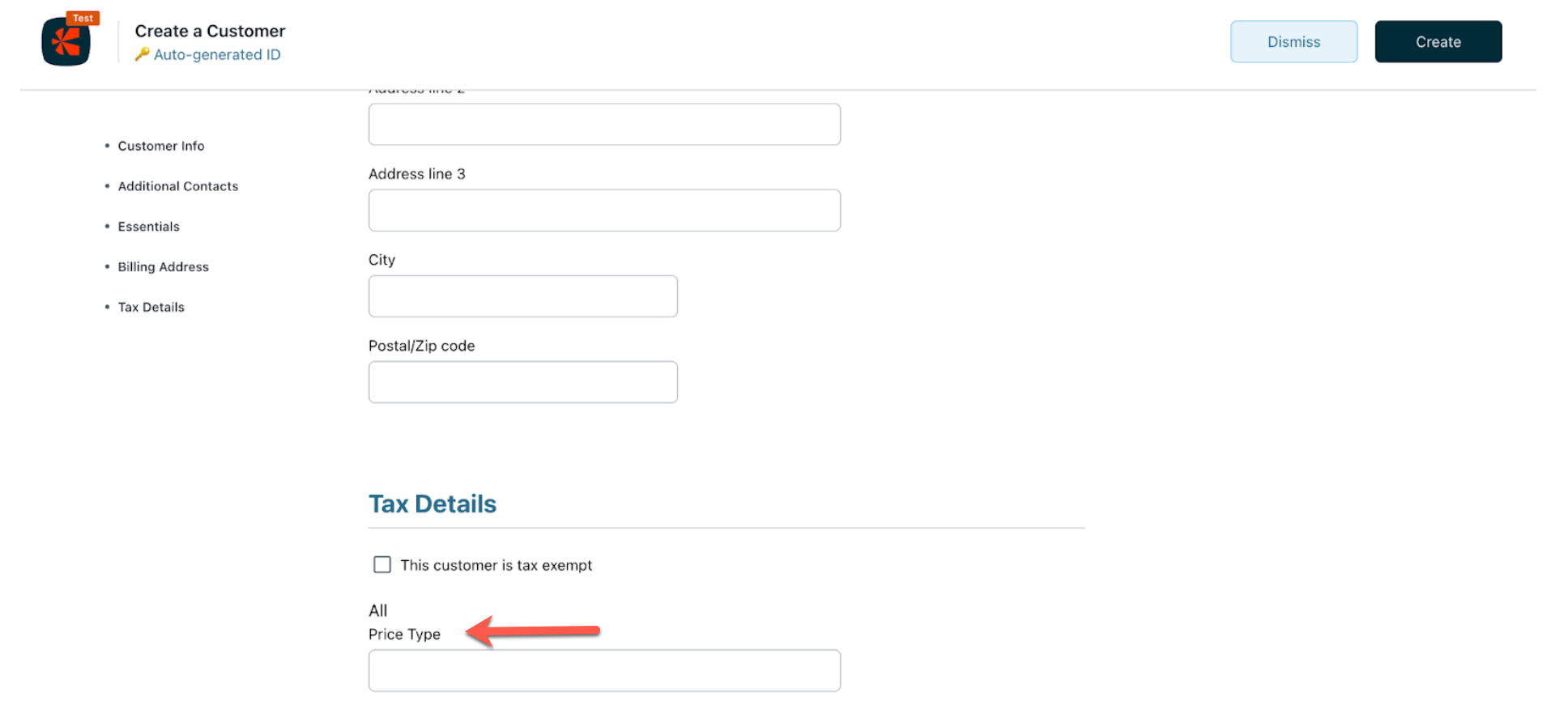
Setting Up Price Type Configurations via the Chargebee API
To set up price type configurations via the Chargebee API, you can leverage the Create a Customer API or Update a Customer API. Specifically, you can utilize the following fields:
tax_providers_fields[provider_name][0]
Value = all
tax_providers_fields[field_id][0]
Value = priceType
tax_providers_fields[field_value][0]
Value = tax_inclusive or tax_exclusive or site_default or blank (case insensitive)
To enable this feature, kindly contact support . You can access the same fields available in the Chargebee dashboard on the customer creation/edit page under tax details.
The price type configuration is designed for calculation purposes only; the representation on the invoice will continue to be based on the configuration at the regional level. For inclusive price types, the total amount will remain consistent regardless of tax rates. For instance, if a plan is priced at $100 with a tax-inclusive price type, the total amount payable by the customer will be $100, irrespective of whether the tax rate is 10% or 20%. Even if the customer is eligible for reverse charges, the payable amount will still be $100, with the invoice tagged accordingly.
The price type configuration if available at the customer level will take priority over the price type setup at the currency level for the customer
When you need a customer to pay directly from their bank account, or other offline payment methods, you can select your preferred Offline Method while creating the customer record. This is possible for new and existing customers.
The drop-down would show up only if you have configured offline payment methods.
For new customers:
In your Chargebee user interface, click Customers > Create Customer. The Payment Method drop-down shows up in the create customer page as shown below:
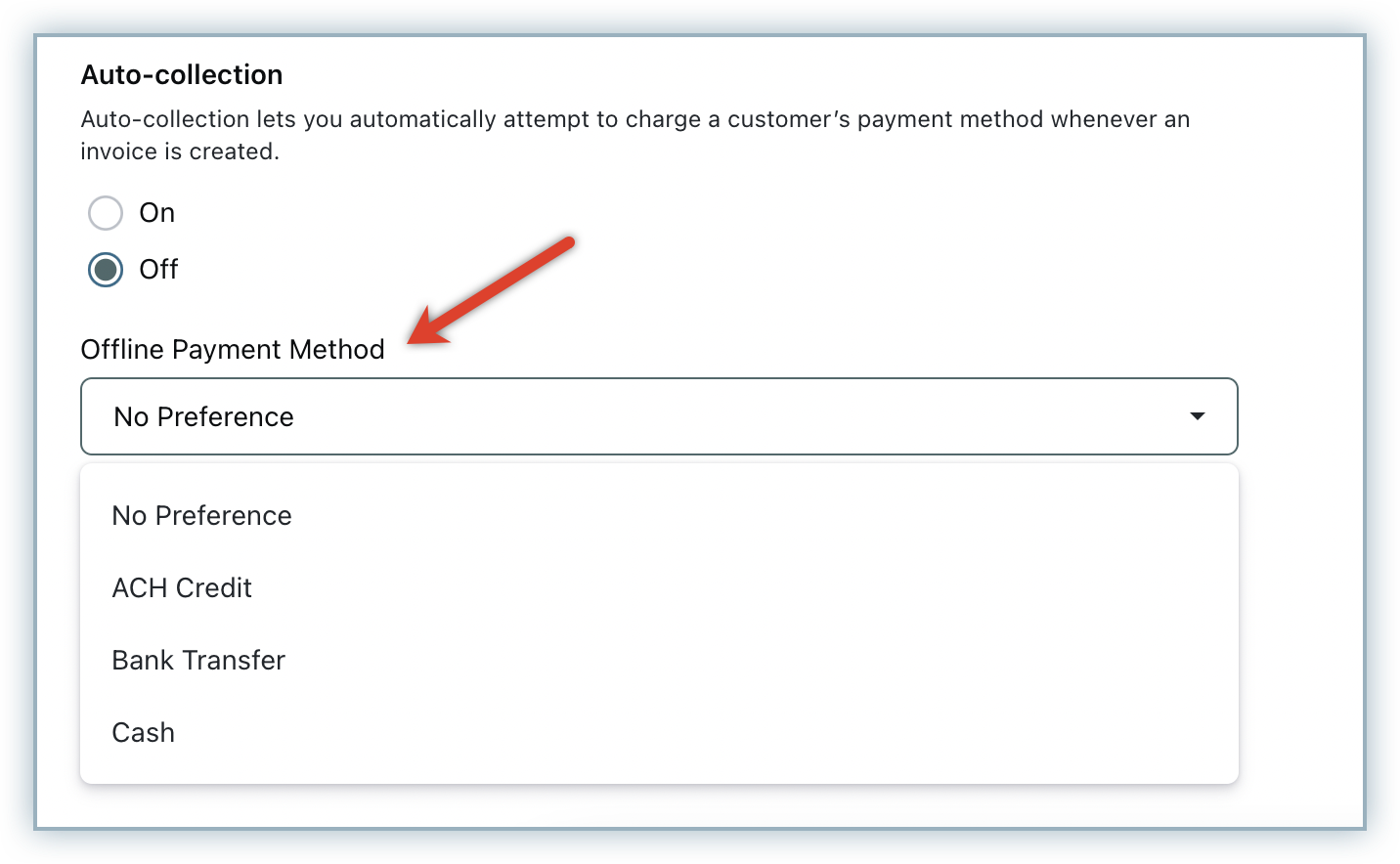
For existing customers:
In your Chargebee user interface, go to the customer for whom you need bank payment enabled and click Edit Customer found on the Action pane. Then, select the required option.
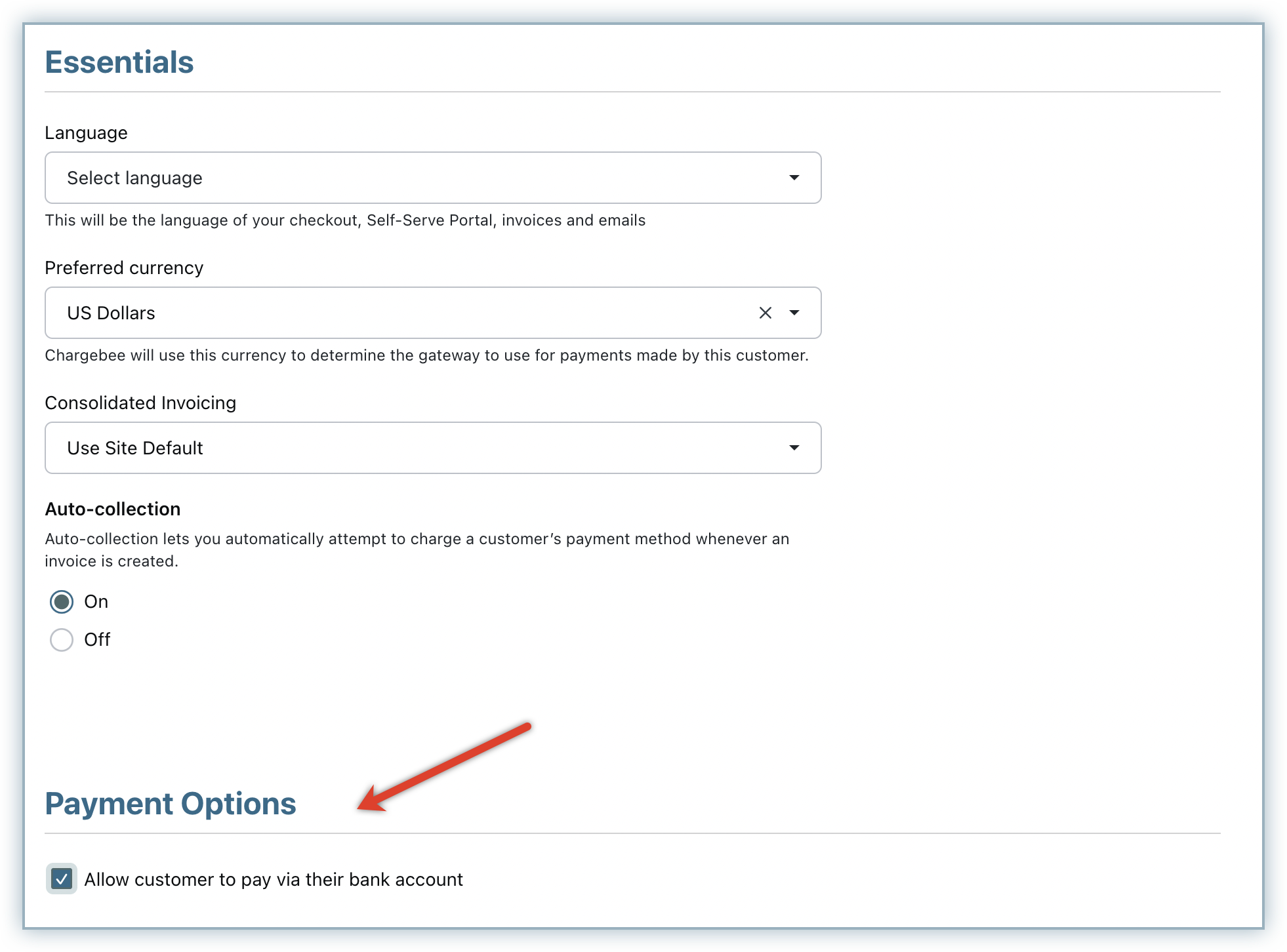
You can either create a subscription for an existing customer or a new customer. When a new subscription is created, a customer object is automatically created as well.
Creating subscriptions for an existing customer can be done through the web interface or using the API .
To create a new subscription for a customer through Chargebee user interface, navigate to the customer's profile and click Create New Subscription option as shown here:
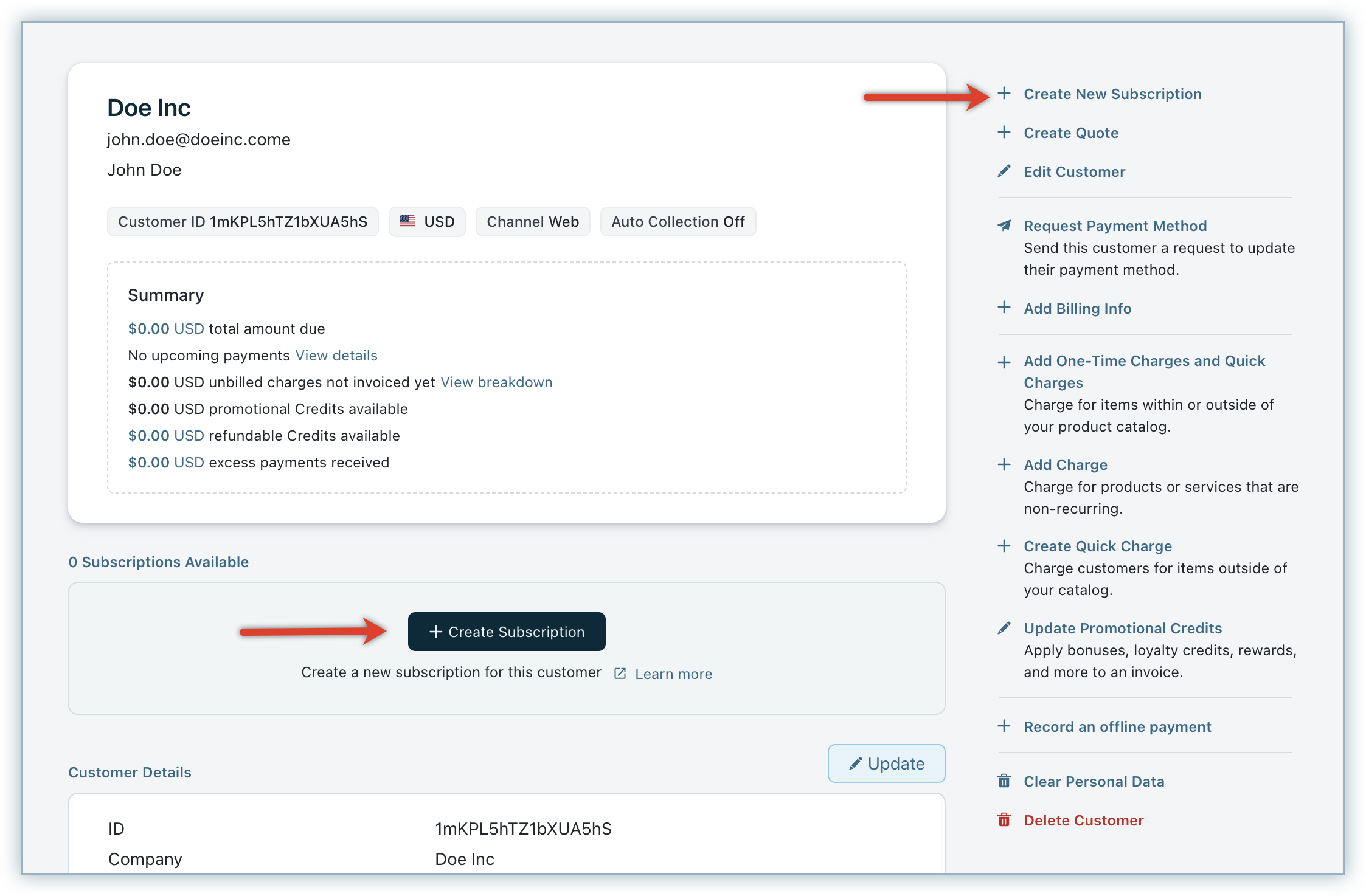
Click here to read more about subscriptions.
Use Quotes in Chargebee to send a pricing quote to your customers before signing them up.
Apart from the default fields provided for the customer object, you can create custom fields to track additional customer information.
Chargebee supports a host of different payment methods and multiple payment methods per customer. Once a customer's payment method details are added, the payment method is tried every time a charge needs to be collected.
If you are adding multiple payment methods against a customer, Chargebee also allows you to mark one as primary and another as backup to ensure you don't lose revenue in case a payment method fails.
Payment method details can be added, updated or removed for a customer using the web interface, Chargebee's API, and Chargebee's hosted pages. Check out payment methods overview for more information.
If you have collected payment from a customer in advance, or if the customer has made a single payment for multiple invoices, use the Record an offline payment option to account for the same:
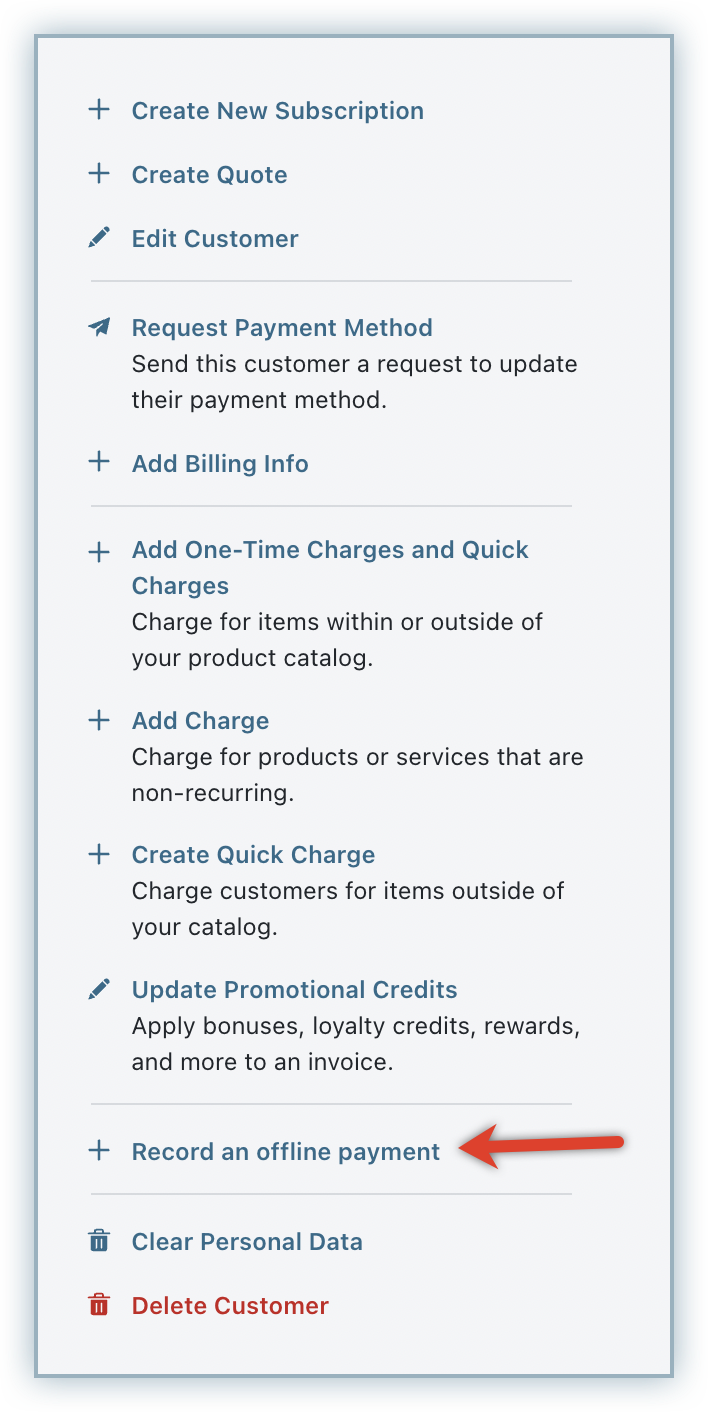
The recorded payment will be automatically applied to the future invoices. It can also be manually applied to the existing Not Paid or Payment Due invoices.
The Auto collection status of a customer decides whether or not subscriptions linked to the customer should be charged automatically using the card on file. If Auto collection is Off, the subscriptions will not be charged automatically even if the card is present. When Auto collection is On, an attempt to charge the card will be made.
When a subscription moves from TRIAL to ACTIVE state with auto collection ON and no card on file, it will be cancelled. However, if the subscription's value is $0, it will not be cancelled even though the Auto collection is "On" and no card on file because there is no attempt to collect charges.
If you've enabled the Payment Terms option for your invoices, and you've turned Auto collection "Off" for a customer, the invoice will be marked as Posted. An email notification will be sent to them, and once the customer is close to the due date, the invoice status will change to Payment Due.
A customer's billing address can be captured during sign up for customers with and without a card. If you've enabled billing address validation, then the billing address information needs to be provided by the customer during sign up.
For merchants in the EU region who've enabled EU VAT, the taxes will be applied based on the billing country specified during sign up. So when creating subscriptions, you need to explicitly provide the billing country for the system to decide whether tax needs to be applied or not.
For subscriptions created without passing the billing country, EU VAT will not be applied.
Billing address for customers with card
The customer's billing information is linked to the customer's credit card for online subscriptions.
When a subscription is created with a card on file, the billing address captured along with the card details will be used as the customer's billing address as well. But you can edit the customer's billing info if needed, using the Update Billing Info option available in the Actions panel.
When only updating the billing information for a customer, the credit card billing info will not be updated. Similarly, when you update the card's billing info while updating the card details, the customer's billing info is not automatically updated.
In a nutshell, for customers with a card, there is no need to worry about updating the customer's billing address separately.
Billing address for offline customers
Offline customers are subscribers who do not have a card on file and have an offline subscription.
For offline subscriptions, the billing information can also be collected during sign up. If you've selected the billing address fields for validation, these fields will be automatically displayed when creating the offline subscription through the Chargebee user interface.
When creating offline subscriptions using the API, you can include the additional attributes for billing_address using the customer object.
For offline subscriptions, you can update the billing information within the subscription through the web interface or through the update billing info for customer API.
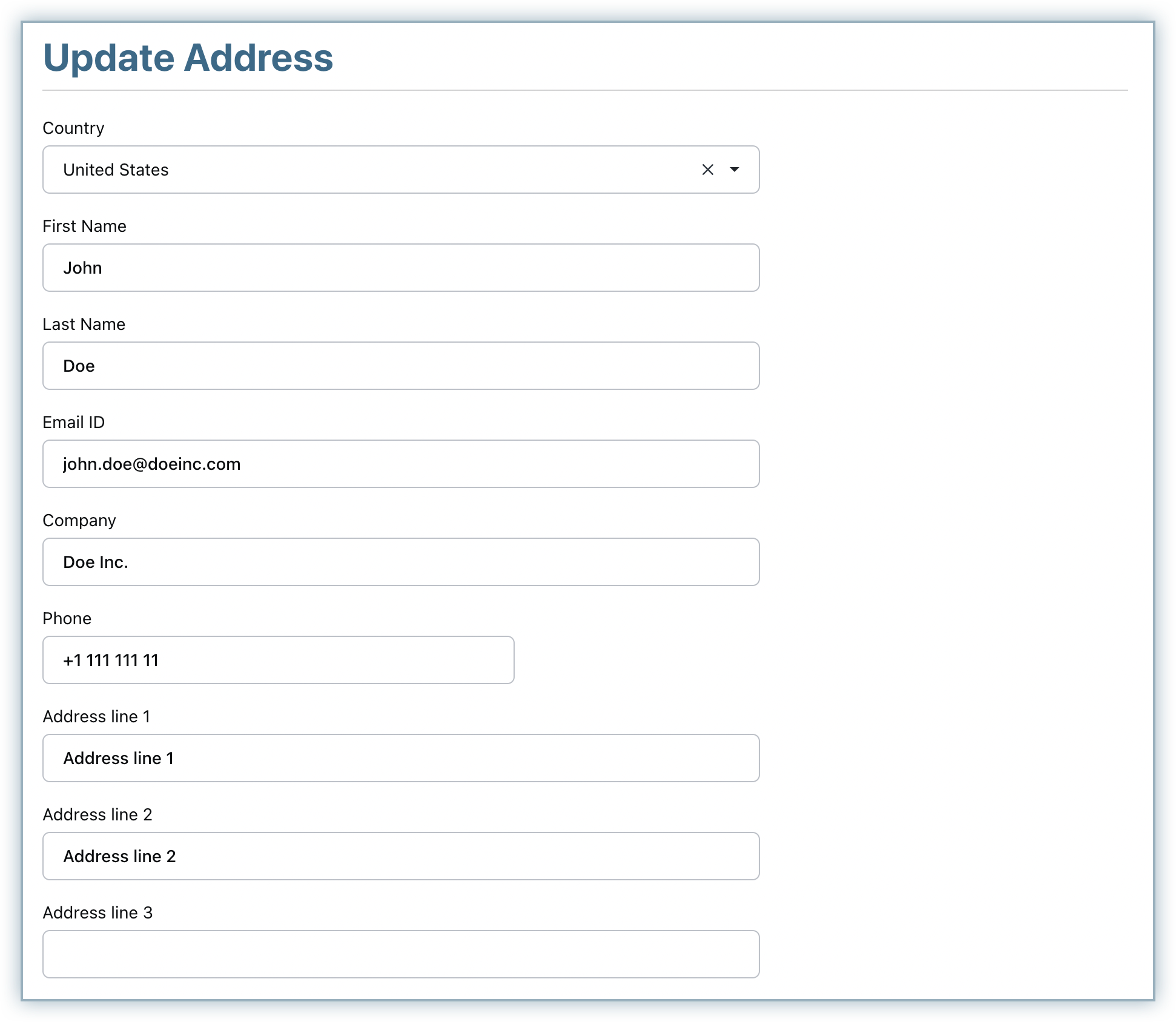
If your customer wants their team or an alternative point of contact to receive emails related to billing such as invoices, payment success notifications, etc., you can configure Chargebee to send them emails using the Add additional contacts option. For example, if your customer would like their accounts team to receive a copy of the invoice, you could add the accountant's email or the team's email as an additional contact and link it to the respective customer. You can add up to a maximum of ten contacts.
You can also have the email addresses added here be validated for duplicates. Contact support to enable this. Once enabled, this feature will prevent Chargebee users from adding an email address that is already present either as a Contact or as the primary email address of the customer. However, also note that duplicate email addresses are still allowed across individual customer records in Chargebee.
To link an additional contact, go to customer's details page and click Add additional contacts:
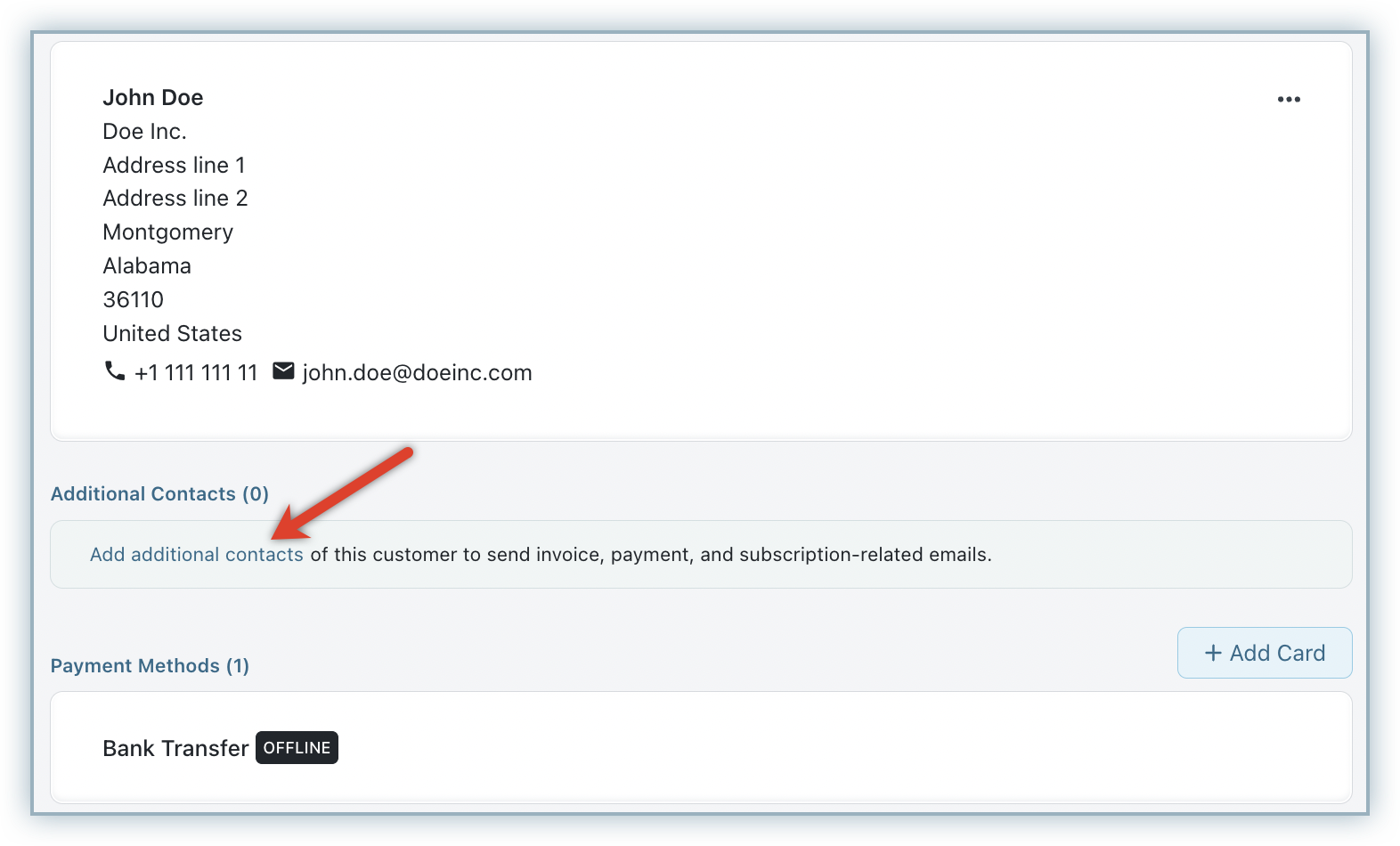
The form for adding contacts appears, as shown below:

Fill in the Id - this will be the reference ID used by Chargebee API to identify the contact.
Fill in the name, email address, and phone number. Use the Tag field to add a tag for your reference.
The emails that can be sent to this additional contact are categorized into two groups:
Enable this option if you want your team to receive the following emails:
Enable this option if you want your team to receive the following emails:
Click Add to save.
The contacts added using this option will appear under a new section, Additional Contacts, as shown below:

This section also provides the options to add, edit, remove contacts, or disable email notifications for them.
This option is available for users assigned the role of Customer Support (Settings > Team Members), or a role with more access than that of Customer Support.
If you wish to delete a customer record in Chargebee, open the specific customer's details page and click the Delete Customer option available on the Actions panel.
This operation is irreversible - all data related to the customer, such as Subscriptions and Invoices, will be deleted.
The numbers in the following reports will get modified when a Customer is deleted:
You can also delete a Customer using the Delete a Customer API .
Note:
The Delete Customer action or API call is unavailable for the customer records linked to gift subscriptions (i.e. those of gifters and the recipients).
For eligible customer records, a special action called Clear Personal Data is available on the action pane (provided Personal Data Management is configured). Based on certain site configurations, this action clears the personally identifiable information in the customer record to help protect customer data privacy.
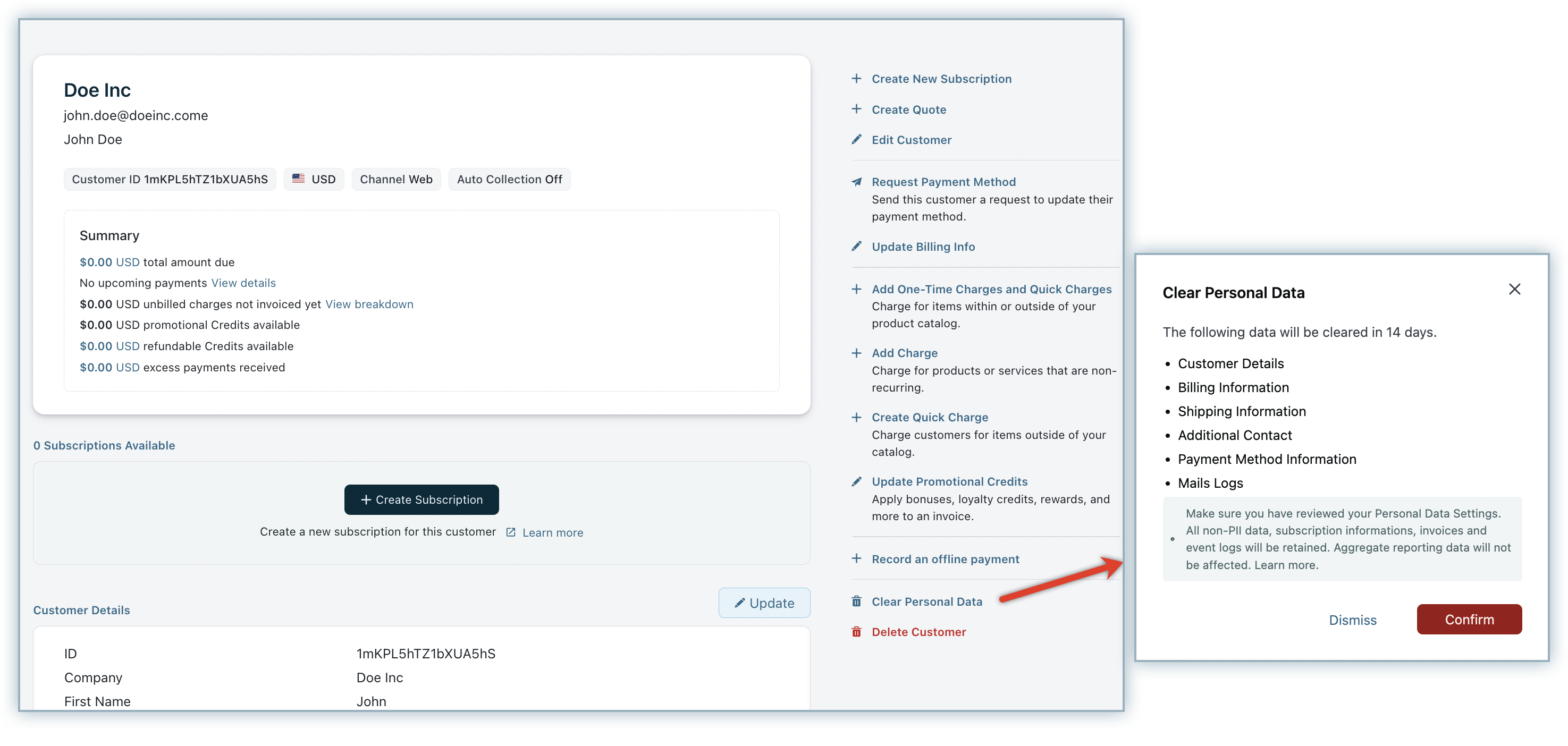
Clear Personal Data is different from Delete Customer. The fine points of difference are noted in a question in this FAQ.